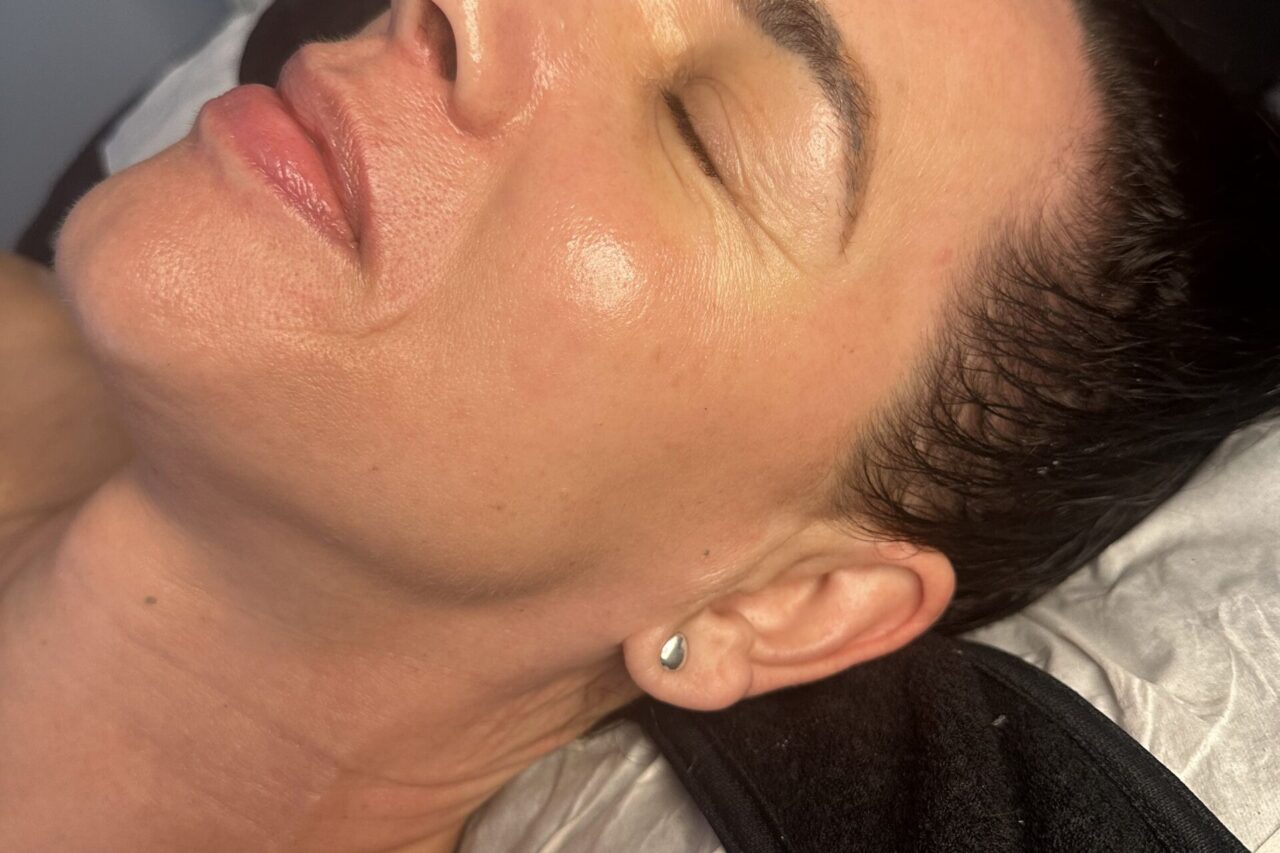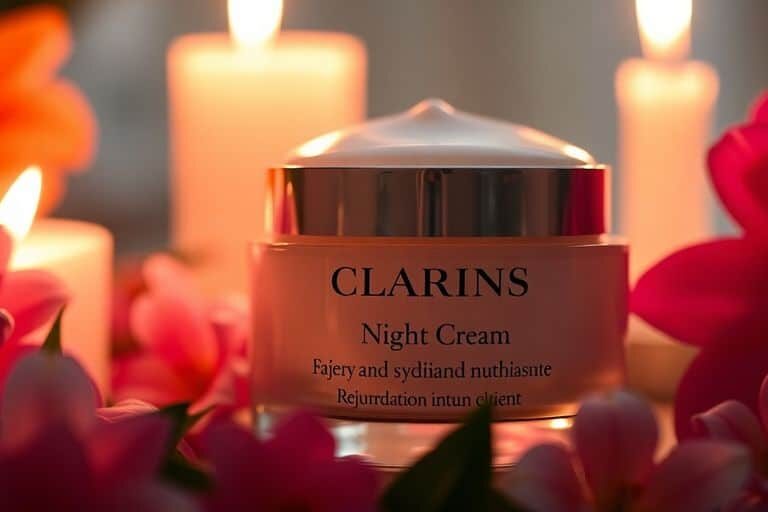Navigating the world of skin care can feel overwhelming, especially when it comes to selecting the right cream for your unique needs. With so many options available, understanding your skin type and the ingredients that work best for you is essential. This guide aims to simplify the process, helping you make informed choices about your skin care a cream, ensuring your skin stays healthy and radiant.
Key Takeaways
- Identify your skin type to choose the right cream effectively.
- Look for key ingredients that address your specific skin concerns.
- Consider the texture of the cream based on your skin type and climate.
- Adjust your skincare routine with the changing seasons.
- Stay consistent with your regimen for lasting results.
Understanding Your Skin Type
Knowing your skin type is the first and most important step in building a skincare routine that actually works. It’s like trying to bake a cake without knowing if you need flour or not – you might end up with a mess! I’ve made that mistake more times than I’d like to admit. Getting this right means you’re more likely to choose products that suit your skin’s needs, and less likely to waste money on things that don’t.
Identifying Skin Types
Okay, so how do you figure out what your skin type is? There are generally five main categories:
- Normal: This is the Goldilocks of skin types – not too oily, not too dry, just right. It usually feels balanced and comfortable.
- Oily: If you often find yourself blotting your face to get rid of shine, especially in the T-zone (forehead, nose, and chin), you probably have oily skin. Pores might be more visible too.
- Dry: Dry skin often feels tight, and can sometimes look flaky. It might feel itchy, especially after cleansing. Take this quiz to find out your skin type.
- Combination: This is where you have oily patches (usually the T-zone) and dry patches elsewhere. It can be a bit tricky to manage.
- Sensitive: Sensitive skin is easily irritated, and can react to certain ingredients with redness, itching, or burning.
There are a few simple tests you can do at home to help you figure it out. One is to wash your face and then wait an hour without applying any products. See how your skin feels and looks. Is it shiny all over? Tight? A bit of both?
Common Skin Concerns
Once you know your skin type, you can start thinking about any specific concerns you want to address. These might include:
- Acne: Spots, blackheads, and breakouts. Can affect any skin type, but more common in oily skin.
- Ageing: Fine lines, wrinkles, loss of elasticity. Everyone experiences this eventually!
- Hyperpigmentation: Dark spots or uneven skin tone, often caused by sun damage.
- Redness and Rosacea: Persistent redness, visible blood vessels, and sometimes small bumps.
- Dryness and Dehydration: Flaky skin, tightness, and a lack of plumpness.
It’s important to remember that you can have more than one concern at a time. For example, you might have oily skin that’s also prone to acne and hyperpigmentation. It’s all about finding the right balance of products to address everything without overloading your skin.
How Skin Type Affects Product Choice
Your skin type plays a massive role in what products will work best for you. Using the wrong products can actually make things worse! For example, if you have oily skin and use a heavy, rich cream, you’re likely to end up with clogged pores and breakouts. On the other hand, if you have dry skin and use a harsh, drying cleanser, you’ll probably end up with even drier, more irritated skin.
The texture of your moisturiser is also important. Normal skin does best with a light, non-greasy moisturiser, while dry skin may need a heavier, creamier formula that is more likely to lock in moisture.
Here’s a quick guide:
- Oily Skin: Look for lightweight, oil-free, and non-comedogenic (won’t clog pores) formulas. Gels and serums are often a good choice.
- Dry Skin: Opt for rich, creamy moisturisers with ingredients like shea butter, ceramides, and hyaluronic acid. Avoid harsh cleansers and alcohol-based toners.
- Combination Skin: This can be tricky, but try using different products on different areas of your face. For example, a light moisturiser on your T-zone and a richer one on your cheeks.
- Sensitive Skin: Choose fragrance-free, hypoallergenic products with gentle ingredients. Always do a patch test before using a new product all over your face.
Understanding your skin type is the foundation of a good skincare routine. Once you’ve got that sorted, you’re well on your way to healthier skin!
The Importance of Ingredients
It’s easy to get caught up in fancy packaging and clever marketing, but honestly, what really matters in skincare is what’s inside the bottle. I’ve learned this the hard way after trying countless products that promised the world but delivered… well, nothing. Understanding ingredients is like learning a new language, but trust me, it’s worth the effort. It’s about knowing what your skin needs and finding products that actually provide it.
Key Ingredients for Hydration
Hydration is the foundation of healthy skin, no matter your skin type. Think of it like watering a plant – without enough water, it’ll wilt! Here are some of my go-to hydrating ingredients:
- Hyaluronic acid: This is a moisture magnet! It can hold up to 1000 times its weight in water, drawing moisture into the skin. I love using a hyaluronic acid serum before my moisturiser for an extra boost.
- Glycerin: A classic humectant that attracts water from the air into your skin. It’s super gentle and effective.
- Ceramides: These are lipids (fats) that help to form the skin’s barrier and retain moisture. Think of them as the glue that holds your skin cells together.
- Squalane: An emollient that mimics your skin’s natural oils, making it a great option for dry skin. It helps to soften and smooth the skin.
Active Ingredients for Specific Concerns
Once you’ve got the hydration sorted, you can start targeting specific skin concerns. This is where active ingredients come in. But remember, more isn’t always better! It’s about finding the right ingredients for your skin.
- Retinoids: These are vitamin A derivatives that can help with everything from acne to wrinkles. They boost cell turnover and collagen production. Start with a low concentration and use them at night, as they can make your skin more sensitive to the sun.
- Vitamin C: A powerful antioxidant that protects against free radical damage and brightens the skin. Look for L-Ascorbic acid for the most effective form.
- Niacinamide: This is a form of vitamin B3 that can help to reduce redness, minimise pores, and improve skin tone. It’s a great all-rounder.
- Salicylic acid: A beta-hydroxy acid (BHA) that exfoliates the skin and unclogs pores. It’s particularly effective for acne-prone skin.
Avoiding Irritants and Allergens
Just as important as knowing what to look for is knowing what to avoid. Irritants and allergens can cause redness, itching, and breakouts, so it’s crucial to read labels carefully. Here are some common culprits:
- Fragrance: This is a big one! Fragrance is a common irritant and can trigger allergic reactions. Look for fragrance-free products, especially if you have sensitive skin.
- Alcohol: While some alcohols are beneficial (like fatty alcohols), others can be drying and irritating. Avoid products with high concentrations of alcohol denat.
- Parabens: These are preservatives that have been linked to hormone disruption. While the research is ongoing, many people prefer to avoid them.
- Essential oils: While they smell lovely, essential oils can be irritating for some people, especially those with sensitive skin. Patch test before using them all over your face.
It’s also worth paying attention to where ingredients fall on the list. Ingredients are listed in order of concentration, so the first few ingredients make up the bulk of the product. If an ingredient you’re looking for is listed near the end, it might not be present in a high enough concentration to be effective.
Remember, everyone’s skin is different, so what works for one person might not work for another. It’s all about experimenting and finding what suits your skin best. Don’t be afraid to consult with a dermatologist or skincare professional for personalised advice.
Choosing the Right Texture

Alright, let’s talk texture! It’s easy to get caught up in ingredients, but the feel of your cream is just as important. Nobody wants to slather on something that feels like glue, right? The texture affects how well your skin absorbs the product and how comfortable it feels throughout the day. It’s all about finding that sweet spot.
Lighter Formulas for Oily Skin
If you’re battling oily skin, the last thing you want is a heavy cream clogging your pores. Lightweight formulas are your best friend. Think gels, lotions, or serums. These absorb quickly without leaving a greasy residue.
- Gels: Water-based and super light.
- Lotions: Slightly more moisturising than gels, but still non-greasy.
- Serums: Often packed with active ingredients and have a thin consistency. A versatile serum enriched with antioxidants or peptides is great for maintaining a healthy appearance.
I’ve found that using a light moisturiser in the morning really helps control shine throughout the day. It’s all about finding that balance between hydration and oil control.
Creamier Options for Dry Skin
On the flip side, if your skin is dry and thirsty, you need something richer and more emollient. Creamier options provide that intense hydration and help to create a barrier against moisture loss. Look for creams containing ingredients like shea butter, ceramides, and hyaluronic acid.
- Creams: Thicker and more hydrating than lotions.
- Balms: Very rich and occlusive, ideal for very dry or irritated skin.
- Oil-based serums: Provide intense hydration and nourishment.
Balancing Texture with Climate
Don’t forget to consider the climate you live in! What works in the humid summer might not cut it in the dry winter. In warmer months, you might prefer a lighter texture, while in colder months, you might need something heavier to combat dryness. It’s all about adapting your skincare to your environment. For example, in the winter, I switch to a richer cream to combat the harsh, dry air. In the summer, I go back to a lighter lotion to avoid feeling greasy. It makes a world of difference!
| Climate | Recommended Texture | Benefits |
|---|---|---|
| Humid | Light gels/lotions | Prevents clogged pores, feels comfortable |
| Dry | Rich creams/balms | Provides intense hydration, protects against moisture loss |
| Temperate | Medium-weight creams | Balances hydration without feeling too heavy, suitable for most skin types |
Seasonal Adjustments for Skin Care
I’ve definitely noticed my skin changes throughout the year, and what works in the summer just doesn’t cut it in the winter. It’s all about adapting your routine to keep your skin happy, no matter the weather. Let’s get into it.
Adapting to Weather Changes
Weather plays a massive role in how our skin behaves. Think about it: in winter, the air is drier, which can lead to dry, itchy skin. Summer brings humidity, which can make your skin feel oily. So, what do we do?
- Winter: Focus on hydration. I switch to a thicker, more emollient cream to combat the dryness. Look for ingredients like ceramides and hyaluronic acid.
- Summer: Go lighter. A gel-based or lotion formula is usually enough to keep my skin moisturised without feeling greasy.
- Spring/Autumn: These transitional seasons can be tricky. I usually stick to a balanced routine, adjusting as needed based on how my skin feels.
Choosing Products for Different Seasons
Selecting the right products is key. Here’s how I approach it:
- Cleansers: In winter, I use a gentle, hydrating cleanser to avoid stripping my skin of its natural oils. In summer, I might opt for something slightly more clarifying to deal with excess oil.
- Serums: I love using hydrating serums all year round, but in winter, I might add an extra layer of a richer serum with ingredients like vitamin E.
- Moisturisers: As mentioned, I change the texture of my moisturiser depending on the season. Heavier creams in winter, lighter lotions in summer.
- Sunscreen: Non-negotiable, all year round! SPF moisturiser is a must, even on cloudy days.
Long-Term Skin Health Considerations
It’s not just about dealing with immediate seasonal issues; it’s about long-term skin health. Here’s what I keep in mind:
- Consistency: Sticking to a routine, even when travelling or during busy periods, is crucial.
- Sun Protection: I can’t stress this enough. Sun damage is cumulative, so protecting your skin every day is essential for preventing premature ageing and skin cancer.
- Listen to Your Skin: Pay attention to how your skin feels and adjust your routine accordingly. If something isn’t working, don’t be afraid to switch it up.
Remember, everyone’s skin is different. What works for me might not work for you. It’s all about experimenting and finding what suits your skin best in each season. Don’t be afraid to consult a dermatologist if you’re unsure. They can provide personalised advice and recommendations.
Personalised Skincare Routines
Let’s be honest, what works wonders for your mate might do absolutely nothing for you. Or worse, it could make things worse! That’s why getting personal with your skincare is so important. It’s all about figuring out what your skin really needs.
Consulting with Professionals
Sometimes, you just need to call in the experts. I’ve definitely been there, staring blankly at a shelf full of products, feeling totally lost. A dermatologist or qualified aesthetician can properly assess your skin and give you tailored advice. They can identify underlying issues, recommend specific ingredients, and even help you avoid wasting money on products that aren’t right for you. Think of it as an investment in your skin’s future!
Tailoring Products to Individual Needs
Once you know your skin type and any specific concerns, it’s time to get picky with your products. Here’s what I mean:
- Dry Skin: Look for rich creams with ingredients like hyaluronic acid and ceramides. These help to lock in moisture and keep your skin feeling hydrated. face moisturiser is key.
- Oily Skin: Opt for lighter, oil-free formulas that won’t clog your pores. Gels and serums can be great choices.
- Sensitive Skin: Avoid products with fragrance, alcohol, and other potential irritants. Look for gentle, hypoallergenic options.
- Combination Skin: This can be tricky! You might need to use different products on different areas of your face. For example, a lighter moisturiser on your T-zone and a richer cream on your cheeks.
Tracking Progress and Adjustments
Skincare isn’t a ‘one and done’ thing. It’s an ongoing process. What works today might not work in a few months, especially as the seasons change or your skin’s needs evolve. Keep an eye on how your skin is responding to your routine.
- Keep a skincare diary: Note down the products you’re using and how your skin feels each day. This can help you identify any triggers or ingredients that aren’t working for you.
- Take photos: It can be hard to notice subtle changes in your skin over time. Taking regular photos can help you track your progress and see what’s really working.
- Don’t be afraid to adjust: If something isn’t working, don’t be afraid to switch it up. Experiment with different products and ingredients until you find what works best for you. Remember to patch test skincare products before applying them to your entire face.
It’s important to remember that everyone’s skin is different. What works for one person might not work for another. Be patient, listen to your skin, and don’t be afraid to seek professional help if you need it. With a little trial and error, you can create a personalised skincare routine that will leave your skin looking and feeling its best.
Application Techniques for Maximum Benefit
When to Apply Your Cream
Timing is everything, isn’t it? When it comes to skincare, I’ve found that applying cream at the right moment can make a huge difference. Generally, the best time to apply your cream is after cleansing and toning, when your skin is prepped and ready to absorb all the goodness.
- Morning: After washing your face, apply a light moisturiser with SPF to protect your skin throughout the day.
- Evening: Use a richer, more nourishing cream before bed to help your skin repair itself overnight.
- After a Bath or Shower: Your skin is more receptive to products when it’s still slightly damp.
Layering Products Effectively
Layering skincare can feel like a complicated science, but I promise it’s not as daunting as it seems. The key is to apply products in the correct order, from thinnest to thickest consistency. This ensures that each product can properly penetrate the skin.
- Start with Serums: These lightweight formulas deliver potent ingredients directly to the skin.
- Follow with Lotions: These provide a base layer of hydration.
- Finish with Creams: These thicker products lock in moisture and create a protective barrier.
I always wait a few minutes between each layer to allow the products to fully absorb. This prevents pilling and ensures that each product can do its job effectively. Also, don’t forget to do a patch test when introducing new products to your routine!
Massage Techniques for Better Absorption
Who doesn’t love a good massage? Turns out, massaging your cream into your skin isn’t just relaxing – it can also boost absorption and improve circulation. I like to use gentle, upward motions to apply my cream, focusing on areas that need extra attention.
- Facial Massage: Use your fingertips to gently massage your cream into your face, working from the centre outwards.
- Neck Massage: Apply cream to your neck and décolletage using upward strokes to help prevent sagging.
- Eye Area: Use your ring finger to gently pat cream around your eyes, avoiding harsh rubbing.
By incorporating these application techniques into your routine, you can maximise the benefits of your skincare products and achieve healthier, more radiant skin.
Maintaining Consistency in Your Routine

Alright, so you’ve figured out your skin type, found some amazing products, and even know how to apply them properly. Now comes the real challenge: sticking with it! It’s easy to get excited at first, but life happens, and skincare routines can fall by the wayside. Let’s talk about how to make sure that doesn’t happen to you.
Building a Daily Regimen
Creating a daily regimen that works for you is key. It’s not about following some complicated 10-step routine you saw online. It’s about finding a few essential steps that you can realistically do every single day.
- Start small: Don’t overwhelm yourself. Begin with the basics: cleanser, moisturiser, and SPF moisturiser in the morning, and cleanser and moisturiser at night.
- Tie it to habits: Link your skincare routine to existing habits. For example, apply your moisturiser right after brushing your teeth in the morning.
- Keep it visible: Store your products where you’ll see them. If they’re tucked away in a drawer, you’re more likely to forget about them.
Staying Committed to Your Skin Care
Okay, so you’ve got a routine. Now, how do you actually stick to it? Here’s the thing: consistency is where you’ll really see the benefits.
- Set realistic expectations: Don’t expect overnight miracles. It takes time for skincare products to work, so be patient and trust the process.
- Make it enjoyable: Find products that you genuinely like using. If you enjoy the scent or texture of a cream, you’ll be more likely to use it.
- Track your progress: Take photos of your skin regularly to see how it’s improving. This can be a great motivator to keep going.
I find that setting reminders on my phone really helps. It might seem silly, but a little nudge can make all the difference, especially on busy days. Also, don’t beat yourself up if you miss a day here and there. Just get back on track as soon as you can.
Recognising When to Change Products
Sometimes, even with the best intentions, your skin might need a change. It’s important to be aware of when your current products aren’t working anymore.
- Seasonal changes: As the weather changes, your skin’s needs change too. You might need a lighter moisturiser for oily skin in the summer and a richer one in the winter.
- Skin concerns: If you develop new skin concerns, like acne or dryness, you might need to adjust your routine to address them.
- Product expiration: Always check the expiration dates and replace products when they expire. Using old products can be ineffective or even harmful.
| Issue | Possible Solution |
|---|---|
| Increased Dryness | Switch to a heavier, more hydrating moisturiser. |
| Breakouts | Consider a non-comedogenic or oil-free formula. |
| Redness or Irritation | Look for products with calming ingredients. |
Remember, skincare is a journey, not a destination. Be patient, be consistent, and listen to your skin. You’ll get there!
Final Thoughts on Your Skincare Journey
Choosing the right moisturiser can feel overwhelming, but it doesn’t have to be. Start by understanding your skin type and what it needs. Remember, there’s no one-size-fits-all solution; what works for someone else might not work for you. Take your time to explore different products, and don’t hesitate to consult with a dermatologist if you’re unsure. Consistency is key, so make moisturising a regular part of your routine. With the right approach, you can achieve healthy, glowing skin that feels as good as it looks. Here’s to finding that perfect cream that suits you!
Frequently Asked Questions
What is the best way to identify my skin type?
You can determine your skin type by observing how your skin feels throughout the day. If it feels tight and rough, you might have dry skin. If it looks shiny and feels greasy, it’s likely oily. Combination skin has both dry and oily areas, while normal skin feels balanced.
Why are ingredients important in skincare products?
Ingredients matter because they directly affect how well a product works for your skin. Some ingredients hydrate, while others target issues like acne or ageing. Knowing what works for you can help you choose the right products.
How do I choose a cream based on my skin type?
If you have oily skin, look for lightweight, non-greasy creams. For dry skin, a thicker, creamier formula is better. Always read labels and choose products that suit your specific skin needs.
Should I change my skincare routine with the seasons?
Yes, it’s wise to adjust your routine with the seasons. In winter, you might need richer creams to combat dryness, while lighter lotions are better for summer.
How can I create a personalised skincare routine?
Start by understanding your skin type and concerns. You can consult a dermatologist for advice, then choose products that fit your needs. Track how your skin reacts and adjust as necessary.
What are the best application techniques for skincare products?
Apply your cream after cleansing and toning your skin. Use gentle, upward strokes when applying, and consider layering products for better results. A light massage can also help with absorption.






